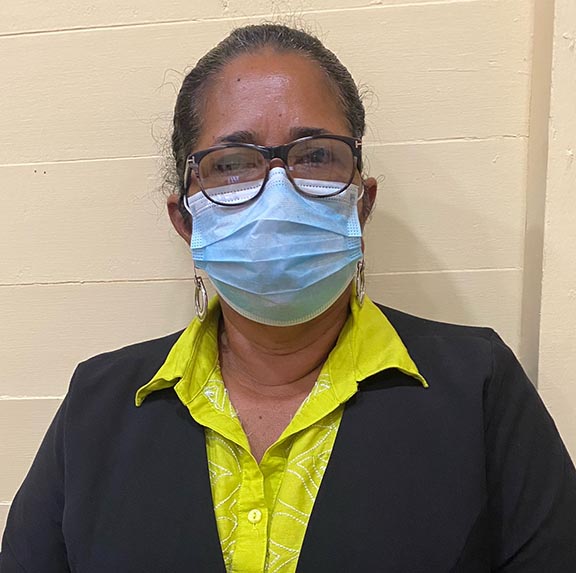Months after Pomeroon farmers faced the worst flooding they have ever seen, Regional Chairman of Region Two, Vilma Da Silva, said while they are returning to their farms, the region is working to implement the necessary infrastructure to mitigate such a reoccurrence.
She explained that with support from the Ministry of Agriculture they have been empoldering farmlands and creating additional drainage between farms.
Some farmers have utilised their flood relief monies from government to invest in improving their drainage capacity and restart planting.
Additionally, the Regional Chair stated that a few farmers have also invested in pumps to aid in their drainage capacity, which she would like to see the region further assisting them with.
The floods, Da Silva pointed out, have devastated the livelihoods of many farmers with cassava farmers facing the brunt of the flooding.
“… Hundreds of roots of cassava were destroyed. This will make it a scarce product on the market for this Christmas season because you might not even get cassava bread or casareep for pepperpot,” she stressed.
Farmlands and homes in the Pomeroon River earlier this year were covered in floodwaters. Water levels in the region climbed to unexpected heights and caused major disruption to livelihoods.
The floods have been described as the most devastating in approximately four decades and for most of the villagers it is the first time they have had such an experience.
Communities like Siriki, Karawab, and others in the Upper Pomeroon, and Akawini Creek in the Lower Pomeroon, were amongst the hardest hit by the flooding.
Former Regional Executive Officer (REO) of Region Two (Pomeroon/ Supenaam), Devanand Ramdatt, had said, “We’ve never seen anything like this before. The rate at which the entire Pomeroon was flooded, is something that even the elderly people of Pomeroon are also saying that they’ve never seen anything like this before. Apart from the Pomeroon, two Amerindian communities, Kabakaburi and St. Monica… also received hampers. We’re in the process of securing more hampers.”
In Karawab, water levels were close to 14 feet high, and villagers said that they were surviving on hampers distributed by the government during a recent visit.
Farmers have said that they are uncertain as to when they will be able to return to farming and where they will find the finances to restart.
During President Irfaan Ali’s visit to the flood-hit communities he promised “to do everything to secure back your livelihood. We are going to do everything to get you back to the farmland; we are going to do everything to help back the household.”
Members of the Caribbean Disaster Emergency Management Agency-led Detailed Damage Sector Analysis (DDSA) had visited the region and conducted their independent investigations. From this assessment, government was able to analyse the situation and provided assistance to flood-affected communities.






